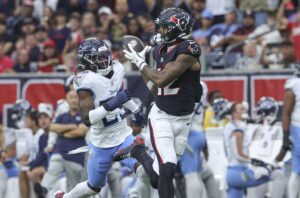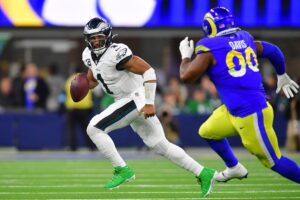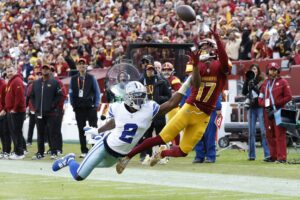It was a relatively quiet March by the NFL’s standards when the Seattle Seahawks signed former Green Bay Packer Eddie Lacy through free agency, and right away the majority of people around the league really liked the move. The Seahawks were having injury driven depth issues in the backfield and the signing of a hulking Lacy (he weighed in at 267 pounds around the time the Seahawks picked him up) looked like it could both reinforce and revitalize this Seahawks backfield.
How Eddie Lacy Can Revitalize the Seattle Seahawks Backfield
Lacy had been plagued by ankle injuries in Green Bay, one limiting him to only 12 starts in the 2015 season with the subsequent one ending his season after only five games. By the end of his stint in Green Bay, he was far from the player that the Packers had drafted in 2013. In his first season Lacy had 11 touchdowns, averaged 78.5 yards per game all while maintaining a 4.1 yards per carry average, impressive given his 284 rushing attempts.
Even in his rookie season, Lacy was a big, physical runner and right from the get-go saw comparisons to former Seahawk Marshawn Lynch. Lacy and Lynch have mirroring numbers at points in their careers as well. In his first full year with the Seahawks, Lynch averaged 4.2 yards per carry off of 285 attempts. That’s a difference of a singular carry and a .1 yards per carry average between Lacy’s rookie season and Lynch’s first full season with the Seahawks in 2011.
Physicality in the Backfield
Since Lynch’s departure, the Seahawks have been searching for a running back that can bring Lynch’s levels of physicality to the backfield. In 2016, Thomas Rawls, Alex Collins and C.J. Prosise all saw a notable number of carries, yet although Collins came closest (4.0 yards per carry), none of the runners were able to bring the kind of physicality that Lynch was known for.
Prosise and Rawls aren’t the prototypical physical running back that Lynch was, so their play style is going to be notably different. With that said, Seattle’s usually patchwork offensive line generally means that runners need to be adept at running through contact–it was a big part of how Lynch succeeded.
Enter Eddie Lacy, the 5’11″ sub-250-pound monster of a runner that’s coming off of a quarter season played in Green Bay. He’s big but not huge, fresh but not rusty and looks ready to shake up this Seahawks backfield that seemed to stagnate at so many points last season.
Will the Seattle Seahawks have Eddie Lacy at his best in 2017? pic.twitter.com/jR1e6t7xP4
— PFF (@PFF) August 7, 2017
When running up the middle last season, the Seahawks averaged 3.2 yards per carry. The 2015 Packers (whom Lacy started 15 games for) averaged 4.3 yards when they ran up the middle. Obviously there are talent discrepancies between the offensive line of the Seahawks and the Packers, but such a notable gap in the average could point towards the impact that Lacy can have on the kind of physical running that the Seahawks based so much of their identity on the past few seasons.
Lacy’s Potential Role in the Offense
Just how Pete Carroll and company choose to use Lacy in the upcoming season remains to be seen. He isn’t even the primary back for the Seahawks at this point, but a reduction in overall carries could actually improve Lacy’s overall yards per carry, so even if he isn’t the lead back for Seattle he can still be the physical presence they want him to be.
Lacy working solely with backup units during team drills. Rawls appears clear number one right now.
— Bob Condotta (@bcondotta) August 9, 2017
The news coming out of training camp mostly has Rawls taking most of the number one reps, but Carroll is famous for his competitive camps so nothing will be assured until the season begins.
In his few starts with the Packers last season, Lacy showed that he still had what it takes to play in the NFL. Now that he’s slimmed down for his role in Seattle, Lacy has the potential to reinvigorate the Seahawks backfield with his physicality and yards after contact. After all, Pete Carroll said it best in an interview with 710 ESPN earlier in the offseason:
“I want him big.”






